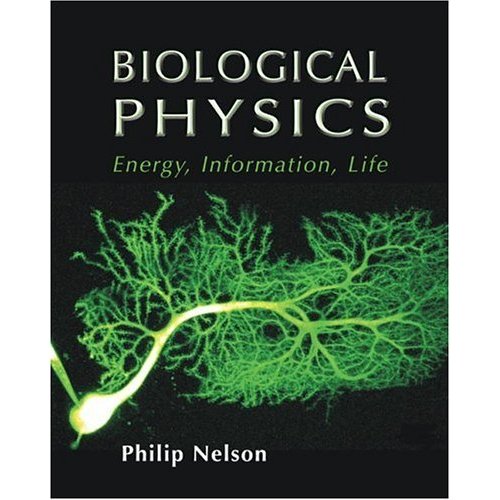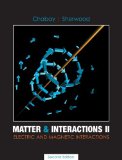| |
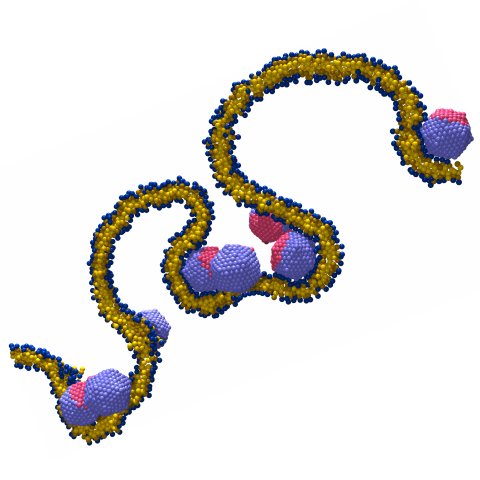 |
|
Teaching
| |
|
Spring 2020
Statistical Physics (33-765)
lecturers: Markus Deserno
12 units, MWF 9:30am—10:20am, DH A301D; recitation: M 1:30pm—2:20pm, DH A200
Statistical Physics attempts to explain macroscopic phenomena in terms of underlying microscopic laws. The large-scale behavior of systems, which we characterize by means of a small number of variables, emerges after eliminating the many microscopic degrees of freedom of their fundamental constituents. These generally unobservable degrees of freedom are far too numerous to follow, but precisely for this reason they can be treated statistically, making use of the law of large numbers and the central limit theorem: averages of a large number of random variables tend to converge to well defined distribution functions, and their relative fluctuations become smaller than other experimental errors. For instance, the pressure of a gas, the electric conductivity of a wire, or the Young modulus of rubber result from a proper statistical treatment of gas molecules, electrons in a solid, and entangled polymer chains, respectively. For this reason, Statistical Physics is the microscopic foundation of Thermodynamics.
This course provides a thorough graduate-level introduction into this subject, following the recent second edition of the textbook "An Introduction to Statistical Mechanics and Thermodynamics" by Robert H. Swendsen.
The course web-page can be found here. |
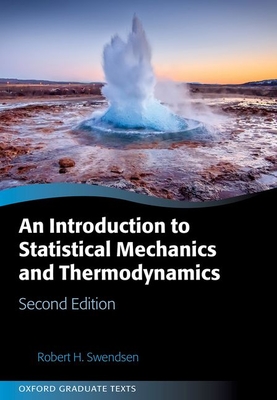 |
|
|
Fall 2019
Physics for future Presidents (33-115)
lecturers: Markus Deserno
9 units, MWF 02:30—03:20PM, Baker Hall 136A
Countless topics of social and political importance are intimately related to science in general and physics in particular. Examples include energy production, global warming, radioactivity, terrorism, and space travel. This course aims to provide key bits of knowledge based on which such issues can be discussed in a meaningful way, i.e., on the level of arguments and not just vague beliefs. We will cover an unusually wide range of topics, including energy, heat, gravity, atoms, radioactivity, chain reactions, electricity, magnetism, waves, light, weather, and climate. No calculus or algebra will be required. The course is open for all students at CMU. |
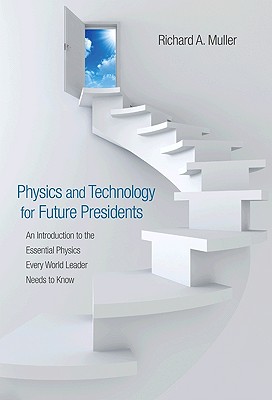 |
|
|
Spring 2019
Statistical Physics (33-765)
lecturer: Markus Deserno
12 units, MWF 9:30am—10:20am, DH A301D; recitation: M 1:30pm—2:20pm, DH A200
Statistical Physics attempts to explain macroscopic phenomena in terms of underlying microscopic laws. The large-scale behavior of systems, which we characterize by means of a small number of variables, emerges after eliminating the many microscopic degrees of freedom of their fundamental constituents. These generally unobservable degrees of freedom are far too numerous to follow, but precisely for this reason they can be treated statistically, making use of the law of large numbers and the central limit theorem: averages of a large number of random variables tend to converge to well defined distribution functions, and their relative fluctuations become smaller than other experimental errors. For instance, the pressure of a gas, the electric conductivity of a wire, or the Young modulus of rubber result from a proper statistical treatment of gas molecules, electrons in a solid, and entangled polymer chains, respectively. For this reason, Statistical Physics is the microscopic foundation of Thermodynamics.
This course provides a thorough graduate-level introduction into this subject, following the recent textbook "An Introduction to Statistical Mechanics and Thermodynamics" by Robert H. Swendsen. |
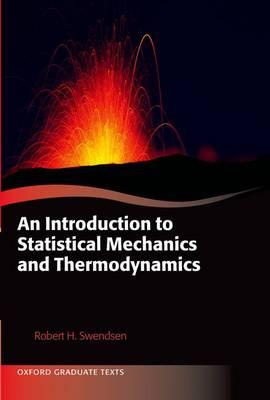 |
|
|
Fall 2018
Thermal Physics I (33-341)
lecturer: Markus Deserno
10 units, MWF 1:30am—2:20am, DH A301D; recitation: T 12:30pm—1:20pm, DH A200
Statistical Physics attempts to explain macroscopic phenomena in terms of underlying microscopic laws. The large-scale behavior of systems, which we characterize by means of a small number of variables, emerges after eliminating the many microscopic degrees of freedom of their fundamental constituents. These generally unobservable degrees of freedom are far too numerous to follow, but precisely for this reason they can be treated statistically, making use of the law of large numbers and the central limit theorem: averages of a large number of random variables tend to converge to well defined distribution functions, and their relative fluctuations become smaller than other experimental errors. For instance, the pressure of a gas, the electric conductivity of a wire, or the Young modulus of rubber result from a proper statistical treatment of gas molecules, electrons in a solid, and entangled polymer chains, respectively. For this reason, Statistical Physics is the microscopic foundation of Thermodynamics.
This course provides a first introduction to the material on the udergraduate level, following the recent textbook "An Introduction to Statistical Mechanics and Thermodynamics" by Robert H. Swendsen. No previous knowledge of thermodynamics and probability theory is required, but the courses 33-232 and 33-234 are prerequisites.
|
 |
|
|
Spring 2018
Statistical Physics (33-765)
lecturer: Markus Deserno
12 units, MWF 9:30am—10:20am, DH A325; recitation: M 1:30pm—2:20pm, DH A200
Statistical Physics attempts to explain macroscopic phenomena in terms of underlying microscopic laws. The large-scale behavior of systems, which we characterize by means of a small number of variables, emerges after eliminating the many microscopic degrees of freedom of their fundamental constituents. These generally unobservable degrees of freedom are far too numerous to follow, but precisely for this reason they can be treated statistically, making use of the law of large numbers and the central limit theorem: averages of a large number of random variables tend to converge to well defined distribution functions, and their relative fluctuations become smaller than other experimental errors. For instance, the pressure of a gas, the electric conductivity of a wire, or the Young modulus of rubber result from a proper statistical treatment of gas molecules, electrons in a solid, and entangled polymer chains, respectively. For this reason, Statistical Physics is the microscopic foundation of Thermodynamics.
This course provides a thorough graduate-level introduction into this subject, following the recent textbook "An Introduction to Statistical Mechanics and Thermodynamics" by Robert H. Swendsen. |
 |
|
|
Fall 2017
Thermal Physics I (33-341)
lecturer: Markus Deserno
10 units, MWF 1:30am—2:20am, DH A301D; recitation: T 12:30pm—1:20pm, DH A200
Statistical Physics attempts to explain macroscopic phenomena in terms of underlying microscopic laws. The large-scale behavior of systems, which we characterize by means of a small number of variables, emerges after eliminating the many microscopic degrees of freedom of their fundamental constituents. These generally unobservable degrees of freedom are far too numerous to follow, but precisely for this reason they can be treated statistically, making use of the law of large numbers and the central limit theorem: averages of a large number of random variables tend to converge to well defined distribution functions, and their relative fluctuations become smaller than other experimental errors. For instance, the pressure of a gas, the electric conductivity of a wire, or the Young modulus of rubber result from a proper statistical treatment of gas molecules, electrons in a solid, and entangled polymer chains, respectively. For this reason, Statistical Physics is the microscopic foundation of Thermodynamics.
This course provides a first introduction to the material on the udergraduate level, following the recent textbook "An Introduction to Statistical Mechanics and Thermodynamics" by Robert H. Swendsen. No previous knowledge of thermodynamics and probability theory is required, but the courses 33-232 and 33-234 are prerequisites. |
 |
|
|
Spring 2017
Statistical Physics (33-765)
lecturer: Markus Deserno
12 units, MWF 9:30am—10:20am, WeH 7316; recitation: M 1:30pm—2:20pm, DH A200
Statistical Physics attempts to explain macroscopic phenomena in terms of underlying microscopic laws. The large-scale behavior of systems, which we characterize by means of a small number of variables, emerges after eliminating the many microscopic degrees of freedom of their fundamental constituents. These generally unobservable degrees of freedom are far too numerous to follow, but precisely for this reason they can be treated statistically, making use of the law of large numbers and the central limit theorem: averages of a large number of random variables tend to converge to well defined distribution functions, and their relative fluctuations become smaller than other experimental errors. For instance, the pressure of a gas, the electric conductivity of a wire, or the Young modulus of rubber result from a proper statistical treatment of gas molecules, electrons in a solid, and entangled polymer chains, respectively. For this reason, Statistical Physics is the microscopic foundation of Thermodynamics.
This course provides a thorough graduate-level introduction into this subject, following the recent textbook "An Introduction to Statistical Mechanics and Thermodynamics" by Robert H. Swendsen. |
 |
|
|
Fall 2016
Physics and Engineering of Complex Fluids
(joint between Physics, 33-785, and ChemE, 06-779)
lecturer: Markus Deserno and Bob Tilton
12 units, MW 1:30pm—3:20pm, DH A200
Complex fluids, also known as soft matter, exhibit many properties and behaviors that are intermediate between those of classic liquids and solids—such as the preeminent role of entropy, a wide spectrum of long relaxation times, the ease with which they can be driven beyond linear response, viscoelasticity, and many more. Not all complex fluids feature all of these aspects, but they often occur together, and in each case result from additional structures that exist or emerge within the material. They come with their own characteristic length scales—beyond atomistic but still microscopic—which enable many new types of interactions and ordering, and they underlie the wide spectrum of energies, rates, or moduli that are the hallmark of such systems. Examples of complex fluids are ubiquitous in daily life and widespread in industry and nature. The key to explaining and manipulating their properties lies in understanding how their characteristic supramolecular organization emerges from the underlying molecular forces, and hence these systems offer countless exciting questions for both engineers and scientists. The goal of this course is to give a joint engineering and science perspective on complex fluids: we will show how many real world problems and applications pose foundational scientific questions that inspire theoretical models and explanations, which in turn enable progress in many areas of engineering and design. |
|
|
|
Spring 2016
Statistical Physics (33-765)
lecturer: Markus Deserno
12 units, MWF 9:30am—10:20am, WeH 7316; recitation: M 1:30pm—2:20pm, DH A200
Statistical Physics attempts to explain macroscopic phenomena in terms of underlying microscopic laws. The large-scale behavior of systems, which we characterize by means of a small number of variables, emerges after eliminating the many microscopic degrees of freedom of their fundamental constituents. These generally unobservable degrees of freedom are far too numerous to follow, but precisely for this reason they can be treated statistically, making use of the law of large numbers and the central limit theorem: averages of a large number of random variables tend to converge to well defined distribution functions, and their relative fluctuations become smaller than other experimental errors. For instance, the pressure of a gas, the electric conductivity of a wire, or the Young modulus of rubber result from a proper statistical treatment of gas molecules, electrons in a solid, and entangled polymer chains, respectively. For this reason, Statistical Physics is the microscopic foundation of Thermodynamics.
This course provides a thorough graduate-level introduction into this subject, following the recent textbook "An Introduction to Statistical Mechanics and Thermodynamics" by Robert H. Swendsen. |
 |
|
|
Spring 2015
Statistical Physics (33-765)
lecturer: Markus Deserno
12 units, MWF 9:30am—10:20am, WeH 7316
Statistical Physics attempts to explain macroscopic phenomena in terms of underlying microscopic laws. The large-scale behavior of systems, which we characterize by means of a small number of variables, emerges after eliminating the many microscopic degrees of freedom of their fundamental constituents. These generally unobservable degrees of freedom are far too numerous to follow, but precisely for this reason they can be treated statistically, making use of the law of large numbers and the central limit theorem: averages of a large number of random variables tend to converge to well defined distribution functions, and their relative fluctuations become smaller than other experimental errors. For instance, the pressure of a gas, the electric conductivity of a wire, or the Young modulus of rubber result from a proper statistical treatment of gas molecules, electrons in a solid, and entangled polymer chains, respectively. For this reason, Statistical Physics is the microscopic foundation of Thermodynamics.
This course provides a thorough graduate-level introduction into this subject, following the recent textbook "An Introduction to Statistical Mechanics and Thermodynamics" by Robert H. Swendsen.
|  |
|
|
Spring 2014
Statistical Physics (33-765)
lecturer: Markus Deserno
12 units, MWF 9:30am—10:20am, WeH 7316
Statistical Physics attempts to explain macroscopic phenomena in terms of underlying microscopic laws. The large-scale behavior of systems, which we characterize by means of a small number of variables, emerges after eliminating the many microscopic degrees of freedom of their fundamental constituents. These generally unobservable degrees of freedom are far too numerous to follow, but precisely for this reason they can be treated statistically, making use of the law of large numbers and the central limit theorem: averages of a large number of random variables tend to converge to well defined distribution functions, and their relative fluctuations become smaller than other experimental errors. For instance, the pressure of a gas, the electric conductivity of a wire, or the Young modulus of rubber result from a proper statistical treatment of gas molecules, electrons in a solid, and entangled polymer chains, respectively. For this reason, Statistical Physics is the microscopic foundation of Thermodynamics.
This course provides a thorough graduate-level introduction into this subject, following the recent textbook "An Introduction to Statistical Mechanics and Thermodynamics" by Robert H. Swendsen.
|  |
|
|
Fall 2013
Physics for future Presidents (33-115)
lecturers: Markus Deserno & Gregg Franklin
10 units, MWF 02:30—03:20PM, DH 1212
Countless topics of social and political importance are intimately related to science in general and physics in particular. Examples include energy production, global warming, radioactivity, terrorism, and space travel. This course aims to provide key bits of knowledge based on which such issues can be discussed in a meaningful way, i.e., on the level of arguments and not just vague beliefs. We will cover an unusually wide range of topics, including energy, heat, gravity, atoms, radioactivity, chain reactions, electricity, magnetism, waves, light, weather, and climate. No calculus and only very elementary algebra will be required. The course is open for all students at CMU. |
 |
|
|
Spring 2013
Statistical Physics (33-765)
lecturer: Markus Deserno
12 units, MWF 9:30am—10:20am, WeH 7316
Statistical Physics attempts to explain macroscopic phenomena in terms of underlying microscopic laws. The large-scale behavior of systems, which we characterize by means of a small number of variables, emerges after eliminating the many microscopic degrees of freedom of their fundamental constituents. These generally unobservable degrees of freedom are far too numerous to follow, but precisely for this reason they can be treated statistically, making use of the law of large numbers and the central limit theorem: averages of a large number of random variables tend to converge to well defined distribution functions, and their relative fluctuations become smaller than other experimental errors. For instance, the pressure of a gas, the electric conductivity of a wire, or the Young modulus of rubber result from a proper statistical treatment of gas molecules, electrons in a solid, and entangled polymer chains, respectively. For this reason, Statistical Physics is the microscopic foundation of Thermodynamics.
This course provides a thorough graduate-level introduction into this subject, following the recent textbook "An Introduction to Statistical Mechanics and Thermodynamics" by Robert H. Swendsen. |
 |
|
|
Fall 2012
Physics for future Presidents (33-115)
lecturers: Markus Deserno & Gregg Franklin
10 units, MWF 02:30—03:20PM, DH A301
Countless topics of social and political importance are intimately related to science in general and physics in particular. Examples include energy production, global warming, radioactivity, terrorism, and space travel. This course aims to provide key bits of knowledge based on which such issues can be discussed in a meaningful way, i.e., on the level of arguments and not just vague beliefs. We will cover an unusually wide range of topics, including energy, heat, gravity, atoms, radioactivity, chain reactions, electricity, magnetism, waves, light, weather, and climate. No calculus or algebra will be required. The course is open for all students at CMU. |
 |
|
|
Spring 2012
Biophysics: From Basic Concepts to Current Research (33-767)
lecturer: Markus Deserno and Mathias Lösche
12 units, WF 1:30AM—2:50PM DH A200
Biological Physics aims to apply the principles of physics and the methods of mathematical analysis and computer modeling to understand how biological systems work. This course serves as an introduction into this discipline, suitable as a one-semester course for students not necessarily specializing in this area. It will both provide the necessary general concepts, as well as follow some selected topics up to the current frontier of research. Prerequisite: 33-765 or permission of instructor. The course will use the textbook "Physical Biology of the Cell" by Rob Phillips, Jane Kondev, and Julie Theriot, as well as other sources and selected original papers. |
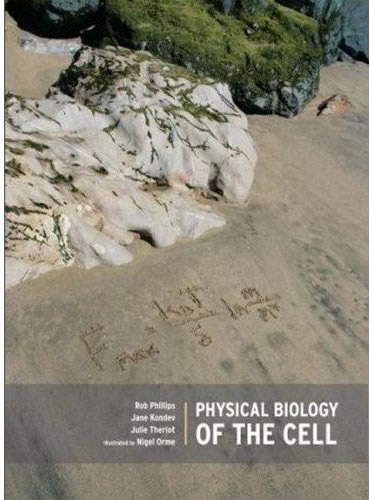 |
|
|
Fall 2011
Physics for future Presidents (33-115)
lecturers: Markus Deserno & Gregg Franklin
10 units, MWF 02:30—03:20PM, DH 2315
Countless topics of social and political importance are intimately related to science in general and physics in particular. Examples include energy production, global warming, radioactivity, terrorism, and space travel. This course aims to provide key bits of knowledge based on which such issues can be discussed in a meaningful way, i.e., on the level of arguments and not just vague beliefs. We will cover an unusually wide range of topics, including energy, heat, gravity, atoms, radioactivity, chain reactions, electricity, magnetism, waves, light, weather, and climate. No calculus or algebra will be required. The course is open for all students at CMU. |
 |
|
|
Spring 2011
Biophysics: From Basic Concepts to Current Research (33-767)
lecturer: Markus Deserno
12 units, MWF 1:30AM—2:20PM DH A200
Biological Physics aims to apply the principles of physics and the methods of mathematical analysis and computer modeling to understand how biological systems work. This course serves as an introduction into this discipline, suitable as a one-semester course for students not necessarily specializing in this area. It will both provide the necessary general concepts, as well as follow some selected topics up to the current frontier of research. Prerequisite: 33-765 or permission of instructor. The course will use the textbook "Physical Biology of the Cell" by Rob Phillips, Jane Kondev, and Julie Theriot, as well as other sources and selected original papers.
|
 |
|
|
Fall 2010
Physics for future Presidents (33-115)
lecturers: Markus Deserno & Gregg Franklin
10 units, MWF 02:30—03:20PM, DH 2315
Countless topics of social and political importance are intimately related to science in general and physics in particular. Examples include energy production, global warming, radioactivity, terrorism, and space travel. This course aims to provide key bits of knowledge based on which such issues can be discussed in a meaningful way, i.e., on the level of arguments and not just vague beliefs. We will cover an unusually wide range of topics, including energy, heat, gravity, atoms, radioactivity, chain reactions, electricity, magnetism, waves, light, weather, and climate. No calculus or algebra will be required. The course is open for all students at CMU.
| 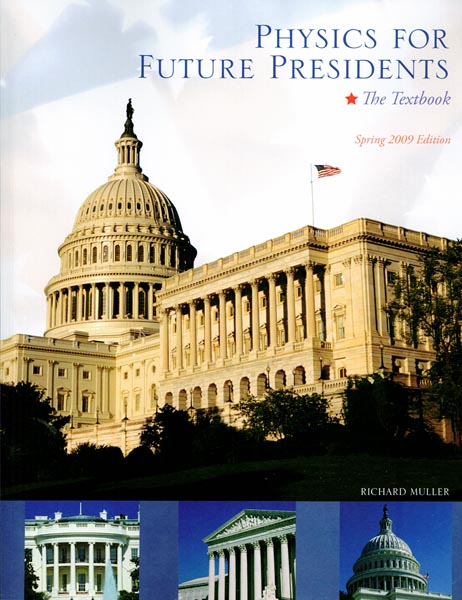 |
|
|
Spring 2010
Biophysics: From Basic Concepts to Current Research (33-767)
lecturer: Markus Deserno
12 units, MWF 1:30AM—2:20PM DH A200
Biological Physics aims to apply the principles of physics and the methods of mathematical analysis and computer modeling to understand how biological systems work. This course serves as an introduction into this discipline, suitable as a one-semester course for students not necessarily specializing in this area. It will both provide the necessary general concepts, as well as follow some selected topics up to the current frontier of research. Prerequisite: 33-765 or permission of instructor. This year I'll try a new textbook: Physical Biology of the Cell by Rob Phillips, Jane Kondev, and Julie Theriot, as well as selected original papers. |
 |
|
|
Fall 2009
Physics for future Presidents (33-115)
lecturers: Markus Deserno & Gregg Franklin
10 units, MWF 02:30—03:20PM, DH 2315
Countless topics of social and political importance are intimately related to science in general and physics in particular. Examples include energy production, global warming, radioactivity, terrorism, and space travel. This course aims to provide key bits of knowledge based on which such issues can be discussed in a meaningful way, i.e., on the level of arguments and not just vague beliefs. We will cover an unusually wide range of topics, including energy, heat, gravity, atoms, radioactivity, chain reactions, electricity, magnetism, waves, light, weather, and climate. No calculus or algebra will be required. The course is open for all students at CMU.
|  |
|
|
Spring 2009
Biophysics: From Basic Concepts to Current Research (33-767)
lecturers: Markus Deserno & Maumita Mandal
12 units, MWF 11:30AM—12:20PM MI 448
Biological Physics aims to apply the principles of physics and the methods of mathematical analysis and computer modeling to understand how biological systems work. This course serves as an introduction into this discipline, suitable as a one-semester course for students not necessarily specializing in this area. It will both provide the necessary general concepts, as well as follow some selected topics up to the current frontier of research. Prerequisite: 33-765 or permission of instructor. Typical text: P. Nelson, Biological Physics, as well as selected original papers. |
|
|
|
Fall 2008
Physics II for Science Students (33-112)
lecturers: Markus Deserno & Kunal Ghosh
12 units, MWF 09:30— 10:20AM, WEH 5403
This is the second semester course that follows 33-111. Electricity and magnetism is developed, including the following topics: Coulomb's law, polarization, electric field, electric potential, DC circuits, magnetic field and force, magnetic induction, and the origins of electromagnetic waves. |
|
|
|
Spring 2008
Biophysics: From Basic Concepts to Current Research (33-767)
lecturers: Markus Deserno & Mathias Lösche
12 units, TR 2:30PM—4:10PM DH A200
Biological Physics aims to apply the principles of physics and the methods of mathematical analysis and computer modeling to understand how biological systems work. This course serves as an introduction into this discipline, suitable as a one-semester course for students not necessarily specializing in this area. It will both provide the necessary general concepts, as well as follow some selected topics up to the current frontier of research. Prerequisite: 33-765 or permission of instructor. Typical text: P. Nelson, Biological Physics, as well as selected original papers. |
|
|
|
|
|






![]()





